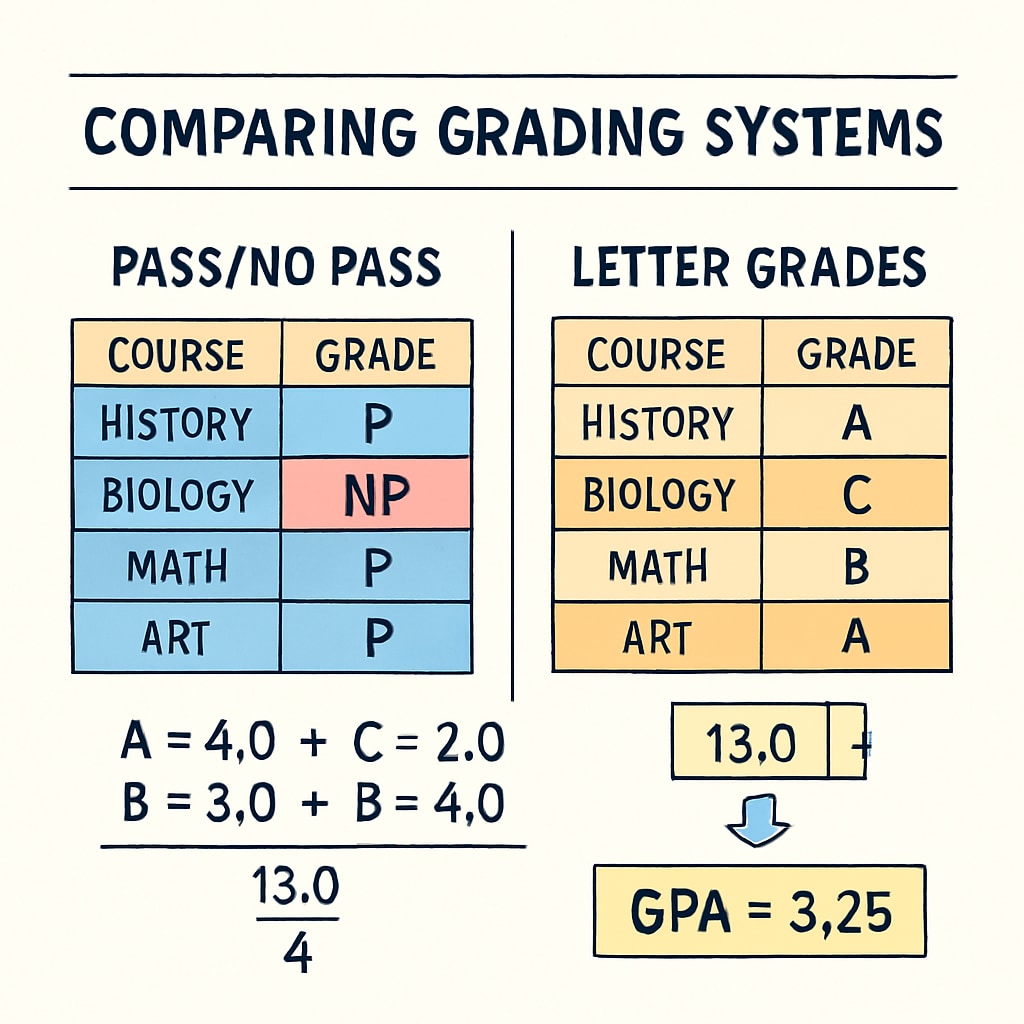The choice between Pass/No Pass (P/NP) grading and traditional letter grades for university elective courses can significantly influence your GPA, academic success, and career prospects. Understanding the implications of this decision is crucial for students aiming to balance their academic goals with future opportunities. This article delves into the advantages and disadvantages of both grading systems and provides a strategic framework to guide your decision-making process.
What Is P/NP Grading, and How Does It Work?
Pass/No Pass grading is a system where students receive either a “Pass” or “No Pass” instead of traditional letter grades (A, B, C, etc.). A “Pass” typically indicates satisfactory performance, often defined as achieving at least a C grade or higher, while “No Pass” signifies unsatisfactory performance. One key feature of P/NP is that it does not affect your GPA directly, unlike letter grades, which are calculated into your overall GPA.

For example, if you take a challenging elective under P/NP grading and earn a “Pass,” your GPA remains unchanged, protecting it from potential drops. However, opting for P/NP might also prevent you from raising your GPA with a high grade, which is worth considering for students aiming to boost their academic standing.
How Grading Choices Impact GPA and Academic Goals
Letter grades contribute directly to your GPA, which can have a lasting impact on your academic transcript. For students planning to apply for graduate programs or competitive scholarships, a strong GPA is often a critical factor. Traditional grading allows for both risks and rewards, as high grades can improve your GPA significantly, while poor performance can lower it.
On the other hand, P/NP grading offers a safety net, especially for courses outside your major or electives that may not align with your strengths. By choosing P/NP, you can explore diverse subjects without the stress of GPA implications. However, it’s important to note that some institutions restrict the number of P/NP courses you can take or exclude certain core courses from this option.
Career Prospects: Do Employers Care About P/NP?
The impact of P/NP grading on employment varies depending on the industry and the role you’re pursuing. In highly competitive fields like finance, consulting, or law, employers may scrutinize your academic transcript and prefer candidates with strong letter grades that demonstrate consistent performance. A transcript with multiple P/NP grades could potentially raise questions about your ability to excel under pressure.

However, for roles that prioritize skills, experience, or creative thinking, such as those in startups, tech, or the arts, the emphasis on GPA may be less significant. Employers in these industries often value practical experience and relevant skills over academic performance. Therefore, opting for P/NP in non-critical courses may not negatively impact your career prospects in these fields.
How to Make the Right Grading Choice
To make an informed decision, consider the following factors:
- Your Academic Goals: Are you trying to maintain a high GPA for graduate school or scholarships?
- The Course Difficulty: Is the course outside your comfort zone or particularly challenging?
- Your Career Aspirations: Will future employers or programs prioritize GPA or specific skills?
- Your Institution’s Policies: Are there limits on the number of P/NP courses you can take?
As a general rule, opt for P/NP grading for electives where the risk of a poor grade outweighs the benefits of a high grade. Use letter grading for courses that align with your strengths or contribute directly to your career goals.
In Conclusion: Navigating the choice between P/NP and traditional grading is a strategic decision that requires careful evaluation of your academic and career priorities. By understanding the implications of each system, you can make choices that align with your long-term goals and set yourself up for success.
Readability guidance: This article uses short and clear paragraphs, active voice, and transitional phrases to ensure readability. Lists are included to summarize key points effectively.


